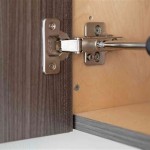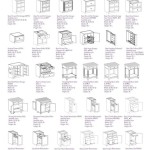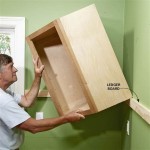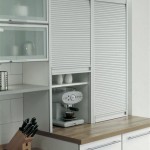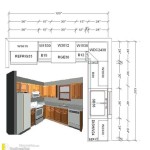How Do I Identify Kitchen Cabinet Hinges?
Identifying the correct type of kitchen cabinet hinge is crucial for repairs, replacements, or upgrades. An incorrectly identified hinge can lead to improper installation, cabinet door misalignment, and potential damage. This guide outlines key features and characteristics to consider when identifying kitchen cabinet hinges.
Key Hinge Characteristics to Consider
Several key characteristics differentiate various hinge types. These characteristics facilitate accurate identification and inform selection when replacing or installing new hinges.
- Mounting Type: Hinges are broadly categorized by their mounting method, which dictates how they attach to the cabinet and door. Common mounting types include face frame, frameless (European), and half-overlay.
- Overlay: Overlay describes how the cabinet door sits in relation to the cabinet frame. Full overlay doors completely cover the frame, while partial overlay doors cover a portion of the frame. Inset doors sit flush within the frame opening.
- Arm Style: The hinge arm connects the mounting plate to the door. Different arm styles exist, including straight arm, cranked arm, and offset arm. Each style impacts the door's opening angle and closing action.
- Closing Mechanism: Hinges may incorporate various closing mechanisms, such as spring-loaded, self-closing, or soft-close features. Identifying the closing mechanism is vital for replicating the existing functionality.
Identifying Face Frame Hinges
Face frame cabinets feature a frame around the cabinet opening to which the hinge attaches. Face frame hinges are typically visible when the cabinet door is closed.
- Look for a visible hinge: If the hinge is readily apparent on the face frame, it's likely a face frame hinge.
- Check for mounting plates: These hinges use mounting plates screwed onto the cabinet face frame and the door.
- Observe the arm style: Common arm styles for face frame hinges include semi-concealed and wrap-around.
Identifying Frameless (European) Hinges
Frameless cabinets lack a face frame. The doors are attached directly to the cabinet sides. Frameless hinges are typically concealed when the door is closed, offering a clean, modern aesthetic.
- Look for a concealed hinge: If the hinge is not visible when the cabinet door is closed, it's likely a frameless hinge.
- Check for a cup: These hinges are characterized by a cup that is bored into the door. The hinge arm fits into this cup.
- Measure the cup diameter: The cup diameter is a standard measurement used to identify compatible replacement hinges.
Identifying Half-Overlay Hinges
Half-overlay hinges represent a hybrid of face frame and frameless styles. The door covers approximately half of the cabinet face frame. These hinges offer a balance of aesthetics and functionality.
- Observe the door overlay: If the door partially covers the face frame, it likely uses a half-overlay hinge.
- Examine the mounting style: These hinges combine elements of both face frame and frameless mounting techniques.
- Consider the opening angle: Half-overlay hinges are designed for specific opening angles, impacting door clearance.
Measuring and Recording Hinge Dimensions
Accurate measurements are critical for obtaining replacement hinges. Record these measurements for reference when purchasing new hinges.
- Measure the mounting plate dimensions: Note the length and width of the mounting plate for face frame hinges.
- Measure the cup diameter and depth for frameless hinges: These are standard specifications used for identification.
- Document the arm style and length: This information helps ensure compatibility and proper door operation.
- Note any special features: Record details like soft-close mechanisms or specific opening angles.
Utilizing Online Resources and Professional Assistance
Leveraging available resources can aid in accurate hinge identification. Consulting with professionals can provide expert guidance.
- Consult manufacturer websites: Many manufacturers offer detailed diagrams and specifications for their hinges.
- Utilize online hardware retailer resources: Many retailers provide online tools and guides for hinge identification.
- Seek professional assistance: Hardware store personnel or experienced carpenters can offer expert advice.
Taking Clear Photos for Reference
Visual documentation facilitates identification and communication with hardware professionals.
- Photograph the hinge from multiple angles: Capture clear images of the mounting plate, arm, and any identifying markings.
- Include a ruler or scale in the photo: This provides a visual reference for size and proportions.
- Photograph the cabinet door and frame: Contextual images help illustrate the hinge's application and overlay.

The Ultimate Guide To Kitchen Cabinet Hinges

Glimpse Through The Various Types Of Hinges For Cabinets Mccoy Mart

5 Common Types Of Cabinet Hinges For Purchasing

How To Measure Cabinet Openings Add Overlay Install Hinges Align Doors Cabinetdoors Com

Unhinged Everything You Need To Know About Kitchen Cabinet Hinges
Need Help Identifying Kitchen Cabinet Hinges Diy Home Improvement Forum

The 10 Types Of Hinges Every Diyer Needs To Know Inset Diy Face Frame Cabinets

Types Of Cabinet Hinges The Home Depot

How To Install Concealed Hinges Painting By The Penny

Types Of Cabinet Hinges The Home Depot
Related Posts

